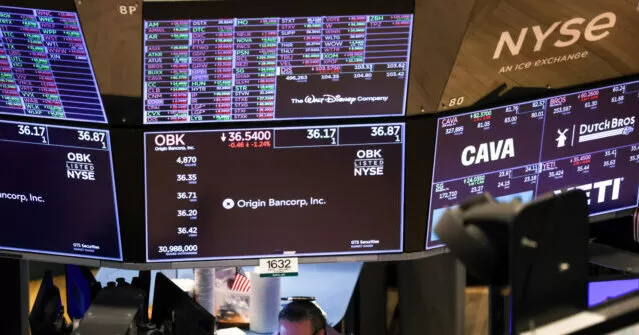A sudden and sharp decline in the U.S. market on Monday sent shockwaves through the financial world. The Dow Jones Industrial Average fell a staggering 890 points, while tech stocks took a major hit amid growing economic fears. This unexpected sell-off has left investors and analysts scrambling to make sense of the situation and determine the best course of action.
The day started off on a positive note, with the Dow opening at a record high. However, as the day progressed, concerns about the state of the economy began to weigh heavily on investors’ minds. The ongoing trade war with China, coupled with fears of a global economic slowdown, caused a wave of panic selling that sent the market into a downward spiral.
Tech stocks, which have been the driving force behind the market’s recent gains, were hit particularly hard. Companies like Apple, Amazon, and Facebook saw their stock prices plummet, erasing billions of dollars in market value. This sudden and dramatic drop in tech stocks has raised concerns about the sustainability of their growth and the overall health of the tech sector.
The sell-off was not limited to just tech stocks, as almost every sector of the market experienced significant losses. This includes traditional blue-chip companies like Coca-Cola and Procter & Gamble, which are typically seen as safe investments during times of market volatility. The fact that even these stable companies were not immune to the sell-off is a clear indication of the severity of the situation.
So, what caused this sudden and broad sell-off? Many experts point to the ongoing trade tensions between the U.S. and China as the main catalyst. The two countries have been engaged in a trade war for over a year now, with no signs of a resolution in sight. This has created a great deal of uncertainty and volatility in the market, as investors struggle to predict the impact of the trade war on the global economy.
In addition to the trade war, there are also concerns about a potential economic slowdown. The U.S. economy has been growing steadily for the past decade, but there are signs that this growth may be slowing down. The recent inversion of the yield curve, which is often seen as a precursor to a recession, has only added to these fears.
Despite the bleak outlook, there are still reasons to remain optimistic. The U.S. economy is still strong, with low unemployment and solid consumer spending. The Federal Reserve has also indicated that it is willing to step in and provide support if necessary. And while the trade war with China may be causing short-term pain, many experts believe that a resolution will eventually be reached, leading to a rebound in the market.
It’s important to remember that the stock market is inherently volatile and that ups and downs are a normal part of the investing process. While the sell-off on Monday may have been steep and broad, it is not uncommon for the market to experience corrections and pullbacks. In fact, these dips can often present buying opportunities for savvy investors.
In conclusion, while the sell-off on Monday may have been alarming, it is not a reason to panic. The U.S. market has weathered many storms in the past and has always come out stronger in the end. As long as investors remain calm and focused on the long-term, there is no reason to believe that this time will be any different. So, let’s take a deep breath and remember that the market is resilient, and this too shall pass.

